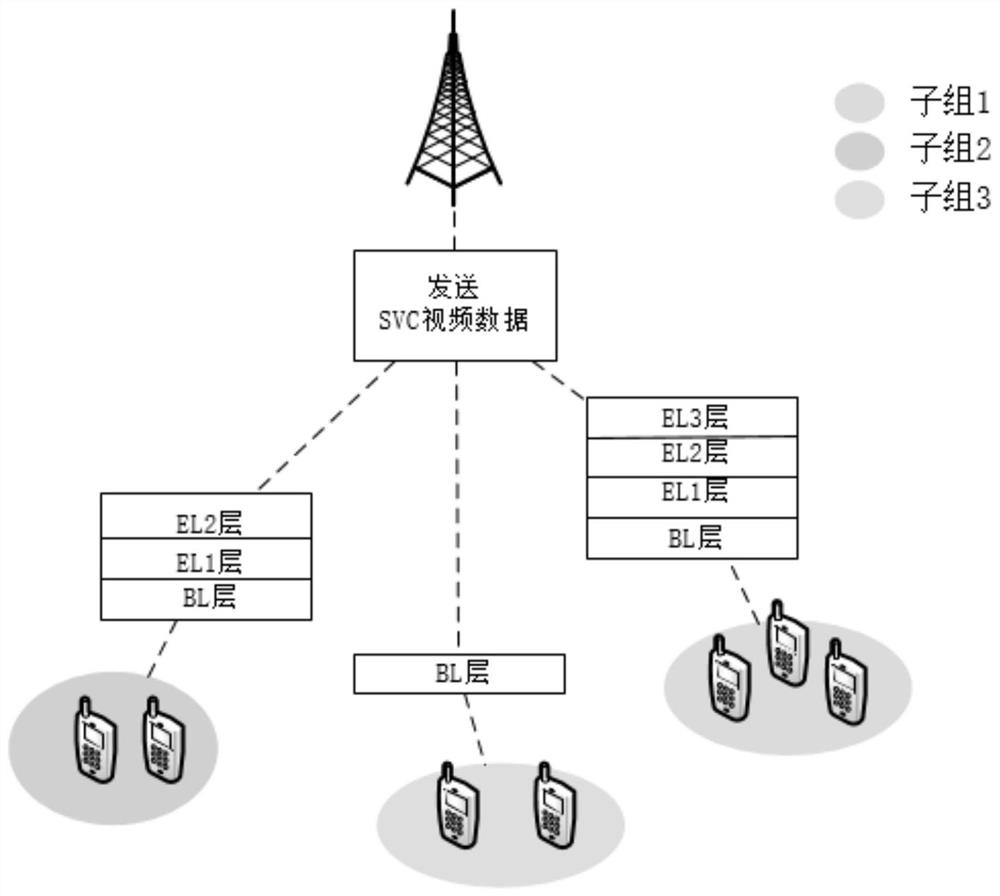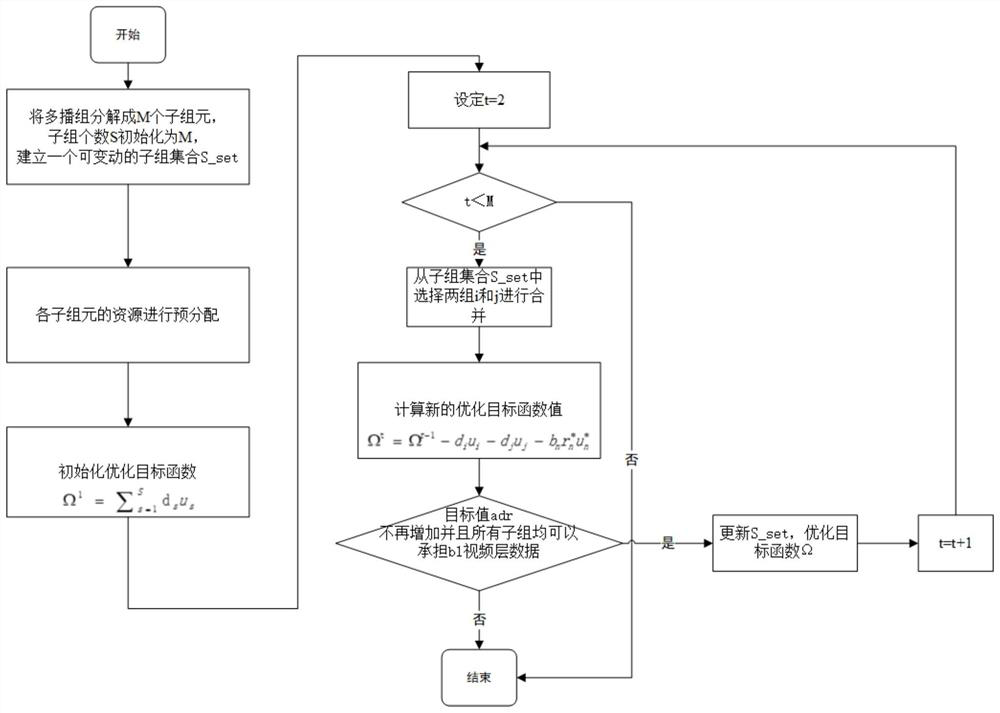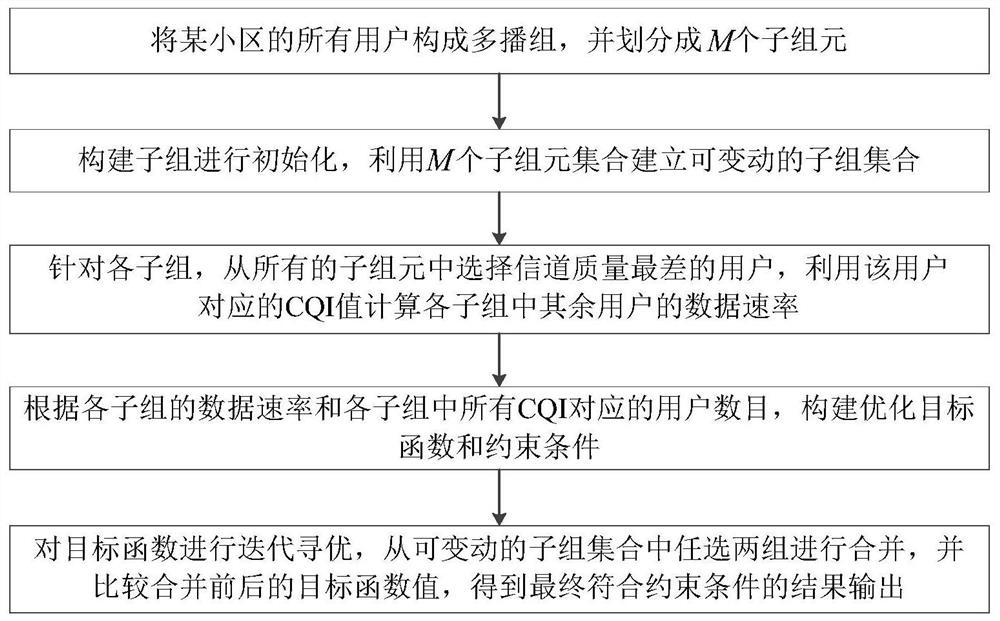A low-complexity multicast group decomposition method based on svc video stream
A low-complexity, multicast group technology, applied in broadcast service distribution, wireless communication, transmission systems, etc., can solve the problems of failing to consider the fairness of multicast group resources and high computational complexity, and achieve good service quality and balance Resource allocation and the effect of improving system fairness
- Summary
- Abstract
- Description
- Claims
- Application Information
AI Technical Summary
Problems solved by technology
Method used
Image
Examples
Embodiment
[0129] The video stream data used in this embodiment comes from the Internet, and is multicast to each user via a ground base station. Since the channel quality of users in a multicast group is different, it is necessary to divide the multicast group into multiple subgroups. The process of multicast transmission resource allocation is to divide the time-frequency resources into multiple resource blocks (RBs), and dynamically adjust the modulation and coding scheme (MCS) according to the channel quality index (CQI). The larger the CQI value, the higher the MCS modulation order. high. Multicast video streams are sent in the cell, and K users in the cell form a multicast group. During multicast transmission, the CQI values of different users are represented by m, 1<m<M; M represents the value of CQI maximum value.
[0130] Such as figure 1 As shown, the number of SVC video layers that can be received by different subgroups will also vary according to the data rate. In order t...
PUM
 Login to View More
Login to View More Abstract
Description
Claims
Application Information
 Login to View More
Login to View More - R&D
- Intellectual Property
- Life Sciences
- Materials
- Tech Scout
- Unparalleled Data Quality
- Higher Quality Content
- 60% Fewer Hallucinations
Browse by: Latest US Patents, China's latest patents, Technical Efficacy Thesaurus, Application Domain, Technology Topic, Popular Technical Reports.
© 2025 PatSnap. All rights reserved.Legal|Privacy policy|Modern Slavery Act Transparency Statement|Sitemap|About US| Contact US: help@patsnap.com



